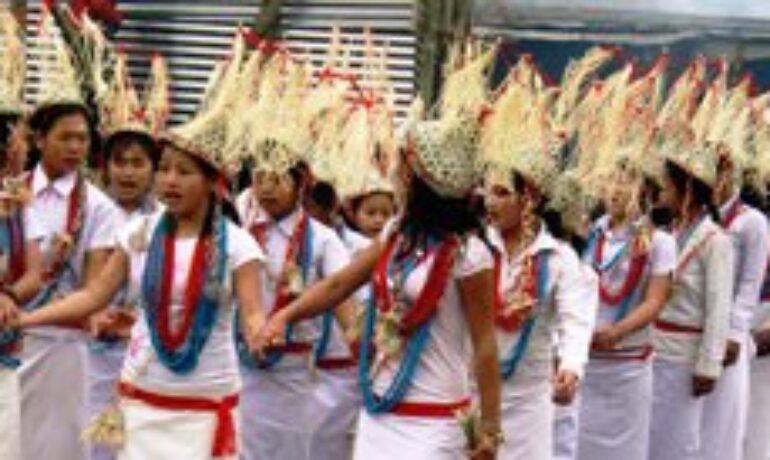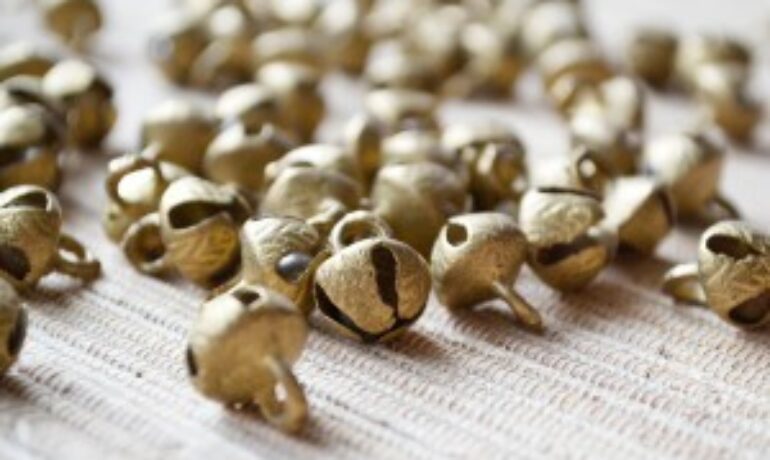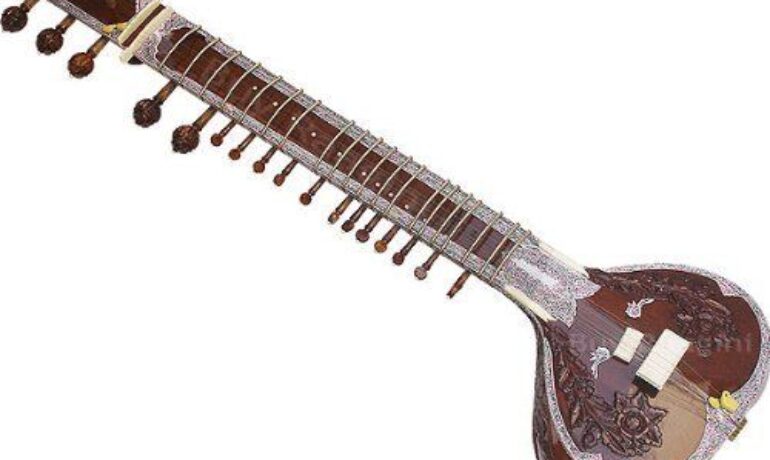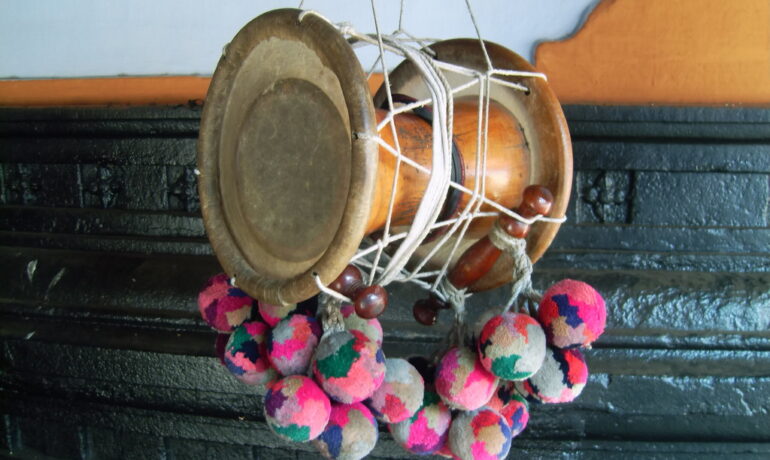The Lambadi is a folk dance among the Banjara which has originated from a village of Anupu. The land of Andhra Pradesh and Telangana are famous for having different folk dances with a varied culture of their own. Even they have their own dances, musical instruments etc. The Lambadis are basically nomads who move from […]
Read MoreThe Jatra is a dance that originated in West Bengal and also in Orissa. It is popular in the States of Bihar as well as it has a vivid music form and the theatre draws in the stories from several sources including the Hindu mythology, the popular legends and the realistic events. It is […]
Read MoreThe Manipuri dance arose from a small region which is covered with hills giving you a geographical solitude. The Manipuri dance originated from rich tradition and cultural background from the region of Manipur a place in North Eastern State of India that is surrounded by hills on all sides. King BhagyaChandra designed the dance […]
Read MoreYakshagana refers to old Sanskrit literature. It is very popular form of theatre combining energetic dancing acrobatics and singing. This is performed in the state of Karnataka. The battle scenes are portrayed and also the performance is heroic and emotional at the same time. Therefore Yakshagana is considered as a folk theatre. The word […]
Read MoreThe Bhavai folk dance is accompanied by a lot of balancing activities like balance in 7 to 9 brass pots on the head and also the objects like glass bottles, edge of a sword and brass plates. The brass pots are replaced with a number of other pots. The dance movements comprise of twirl and […]
Read MoreThe garba dance was popularised by Usha, the grand daughter in law of Lord Krishna. It originates in Gujarat. This raas dance is also known as garba dance it is also known as lasya nritya. The garba originates from a community circle in the North Western part of Gujarat. It even relates to an […]
Read MoreThe Mithila and Koshi region of North Bihar is famous for its folk dance which is named as Jat Jatin. It is performed in the moonlight by the couples and their epic love stories are depicted.The story is about Jat and Jatin who were lovers and were separated due to contrary situations in life this […]
Read MoreAJI LAMU DANCE: The Monpa tribe is a folk dance that emerged from the Monpa tribe. The group daces are loaded with heaps of entertainment. The dances cover their faces with many different animal masks and also have lot of props which are used for the entertainment. Due to these accessories people are enthralled to […]
Read MoreThe Bardo Chham folk dance is a very important folk dance among the tribes of Arunachal Pradesh. The dance is performed during festivals. Thousands of years of ancient traditions are preserved by the primitive tribal communities who live in the Himalayas. The tough lifestyle of these tribal people made them able to choreograph these folk […]
Read MoreThe indigenous dance form named Popir is one among the most popular dance forms. It is performed by Galos of Arunachal Pradesh. This is a dance form mainly performed by girls who are young with bright dresses with along with headgears and is greatly similar to the ponung dance. The girls wear their traditional costumes […]
Read MoreThe most fantastic colourful festival of the Arunachal Pradesh is the’ Chalo loku’ which is derived from Cha meaning paddy, Lo meaning season and loku means festival. It is celebrated in the month of October and November every year once the harvest of the paddy field is ripe and is ready to be harvested. This […]
Read MoreLion and peacock dance The monpa tribe of Arunachal Pradesh perform the folk dance popularly known as Lion and Peacock Dance. In this dance the gait and movements of animals are imitated by the dancers. Two groups are formed which are accompanied with a drummer each. The masks of cock and the lion heads are […]
Read MoreThe acts of Lord Krishna were written in the language of Brajavali. Ankia Naat is performed by the artists in one act it is called Bhaona which is written in a language that is a mixture of Assamese-Mythili and mainly focuses on the acts of Lord Krishna. Singers, instruments, dance, and costumes are the main […]
Read MoreRongali Bihu, Kongali Bihu and Bhogali Bihu are the main Bihu festivals in Assam. Bihu is a folk dance in Assam which is performed during the Bihu festival. In the year 1694 at Ranghar fields, as per the invitation of Ahom King Rudra Singha, the Bihu dance performers performed the dance on the occasion of […]
Read MoreOjapali is a dance that involves song, dance, and drama that is performed by a group of 1 chief performer and 3 to 4 palis therefore it is called Ojapali. A palm-sized symbol is an instrument that is used it is also known as khutitaal. Nupur, silver jewelry, and white gowns with long sleeves are […]
Read MoreIn the region of Telangana, Kolatam is a different version of dandiya which is becoming extinct. Therefore, it is performed during festivals like Bathukamma for Holi and some other special occasions. The navaratrulu of Bathukamma is considered a special occasion for performing Kolatam as well as Dandiya. Everyone enjoys performing the dance: men, women and […]
Read MoreIn order to to complement the the rhythm of the dance, the dancers wear ghungroo which is made of several metal bells that are strung together. The ghungroo are used in many folk dances and even in bhajans and abhang to give the additional rhythmic touch. The old ghungroos were made by arranging the metallic […]
Read MoreGhatam is an instrument in India that is unlike tabla and mridangam as it doesn’t have a covering of a membrane over its mouth. It produces various metallic sounds and comes in different sizes which give rise to give different pitches. The Ghatam should be held by the player with the mouth pressed against the […]
Read MoreSwaram means note and Mandal means group it means that the Swarmandal indicates a large number of notes which can be produced by it. It is used in Hindustani vocal music. The instrument is tuned to produce a particular Raaga and to create a sound space during a break for taking a breath. It is […]
Read MoreThe south Asian classical music can be categorized into two types- Hindustani music and the Carnatic music. The Hindustani music is famous in the three fourths of the northern subcontinent . in the part of the subcontinent mainly the Indo Aryan languages are spoken. The Carnatic music has taken birth in the part of the […]
Read MoreThe Carnatic music is type of music which was not influenced by Arab or the Iran effect. The Carnatic music has more inclination to voice. The music also imitates the singing. In Carnatic music there are less instrumental forms. Father of Carnatic music The south Indian classical Carnatic music was chiefly founded by Purandara […]
Read MoreAn instrument that is used in classical and folk music is the nadaswaram which is an instrument made of wood and metal and it can be played by blowing wind. This instrument is accompanied by thavil (a drum). Nada means pleasant sound and Swaram means note. The sound which is produced is considered auspicious and […]
Read MoreKanjira belongs to the family of the tambourine and has emerged from South India. It has been known by different names like: ganjira, khanjiri and khanjari. It produces a unique resonant sound due to the bells or zils which are inside the frame. The frame usually measures 17 to 19 cm in diameter and 6 […]
Read MoreSarangi is a very refined bowed instrument used in North India.IN the mid 17th century it became popular in the folk tradition as a component of vocal music. It is derived from Seh (Persian meaning three) and (Sarangi meaning colored). It is also known to mean a hundred colors which represent its flexible tunability. In […]
Read MoreThe Sitar is a pear-shaped instrument of the lute family. This instrument has a long, wide hollow wooden neck along with front and side tuning pegs and 20 arched movable frets. It is very popular in Pakistan, northern India, and Bangladesh. It has metallic strings and are five in number and has two drone stings […]
Read MoreTanpura is used in Carnatic and Hindustani music which is a drone instrument. Adharaswara is the base note which creates an aesthetic ambiance in the concert. Tanpura can make all the seven notes of the gamut. It doesn’t provide specific notes or rhythm; it can only provide a circle of certain pitches that don’t produce […]
Read MoreTo accompany nadaswaram used for Hindu religious music. It is made of jackfruit wood with an animal membrane stretched on either side. The instrument is hung by a strap of cloth from the neck. The fingertips are covered by thumbcaps made up of wheat flour and water. The stick on the left ad fingers on […]
Read MoreUdukkai is an hourglass-shaped instrument used for devotional and folk music in India. If we tighten the lace in the middle it changes the pitch. It is made of wood or brass. It is very good in the market as the features are unmatchable. The udukku is covered with skin surfaces covered on both sides. […]
Read MoreViolin, byname fiddle, bowed stringed musical instrument that evolved during the Renaissance from earlier bowed instruments: the medieval fiddle; its 16th-century Italian offshoot, the lira da braccio; and the rebec. The violin is probably the best known and most widely distributed musical instrument in the world. Like its predecessors but unlike its cousin the viol, the violin has a fretless fingerboard. Its strings are hitched […]
Read MoreMandolin is an eight-stringed instrument and resembles the lute and it first emerged in the 18th century in Italy. It ranges from classical to bluegrass and to jazz it covers all styles of music. It evolved from Mandora in the 16th century. Mandolin first appeared in Naples, Italy in the mid-1700s. It was named as […]
Read MoreSarod is a common string instrument belonging to the lute family in northern India, Pakistan, and Bangladesh. The sarod is about 39 inches and the wooden body has a skin belly. The neck is broad and contains a fretless fingerboard covered in metal. The fingerboard is useful as it accommodates the characteristic sliding pitches. The […]
Read More





















